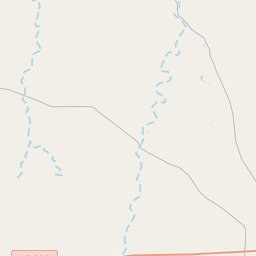Spanish Road to Santa Fe, 1808
Historical marker location:






Most direct road from San Antonio to Santa Fe, during Spanish era in Texas, 1519-1821. Charted for closer ties between Mexico City and New Mexico, after American explorer Zebulon Pike blazed trail from U.S. to New Mexico. Spanish road of 1808 was mapped by Capt. Francisco Amangual and 200 soldiers. Amangual, veteran of 46 years of service to Spain, left San Antonio on March 30, 1808. On April 8, coming into this valley 5 miles to the south, he followed the East James (then called El Chimal Creek, for its bordering bluffs that resemble Indian headdresses), and camped that night by this red bluff. The party saw much game, including buffalo, and killed a bear. Stampedes and losses of horses and mules (some loaded with crude sugar and other food) made the trip difficult. The route pointed north-northwest. The party reached Santa Fe on June 19, and six months later returned to San Antonio. Although Zebulon Pike (discover of Pike's Peak) had traveled with only eight men, Amangual had to field a large party. One goal of his expedition was to impress the wild and fierce plains Indians with the might and glory of Spain. The road measured in 1808 has traces visible today, parallel to auto roads. (1967)
As one of the most visible programs of the Texas Historical Commission (THC), historical markers commemorate diverse topics in Texas history, including: the history and architecture of houses, commercial and public buildings, religious congregations, and military sites; events that changed the course of local and state history; and individuals who have made lasting contributions to the state, community organizations, and businesses.
Texas is also home to the world's largest honky-tonk, Billy Bob's Texas in Fort Worth. The venue covers three acres and can hold up to 6,000 people.
The county was officially organized in 1876 and named after George C. Kimble, a famous Texan who fought in the Texas Revolution. During the late 19th and early 20th centuries, Kimble County experienced a period of growth and development. Railroads were built, connecting the county to other parts of Texas, which facilitated the transportation of goods and people.
The discovery of silver and lead in the county drew even more people to the area, resulting in the establishment of several mining communities. For a time, the county was a hub of mining activity, greatly contributing to its economic prosperity. However, as the mining industry declined in the early 20th century, the county shifted its focus to agriculture and ranching.
Today, Kimble County continues to embrace its rural character and agricultural heritage. It is known for its picturesque landscapes, including the beautiful South Llano River State Park. The county's economy is primarily driven by agriculture, including livestock, hunting, and pecan farming. With its combination of natural beauty, historical significance, and thriving rural lifestyle, Kimble County remains a charming part of Texas.
Kimble County Timeline
This timeline provides a concise overview of the key events in the history of Kimble County, Texas.
- 1850: Kimble County is created from parts of Bexar, Gillespie, and Mason counties.
- 1869: The town of Kimbleville is established as the county seat.
- 1873: The name of Kimbleville is changed to Junction City.
- 1882: The town is officially incorporated as Junction City.
- 1894: The name of Junction City is changed to Junction.
- 1901: The Kansas City, Mexico and Orient Railway reaches Junction, leading to an increase in population and economic growth.
- 1927: A devastating flood hits Junction, causing significant damage to the town.
- 1949: The county seat is moved from Junction to its current location in Junction City.
- 2001: The Kimble County Historical Museum opens in Junction to preserve the county's history.